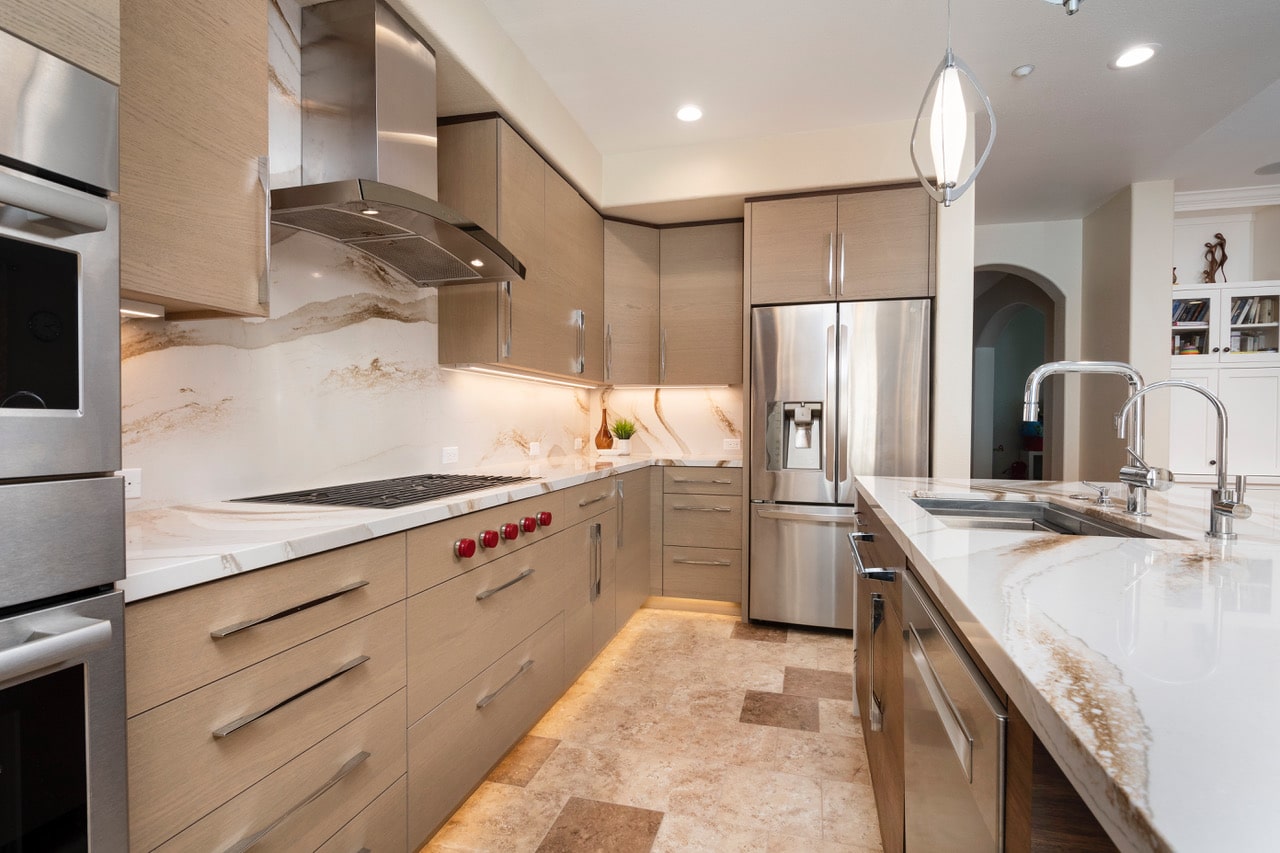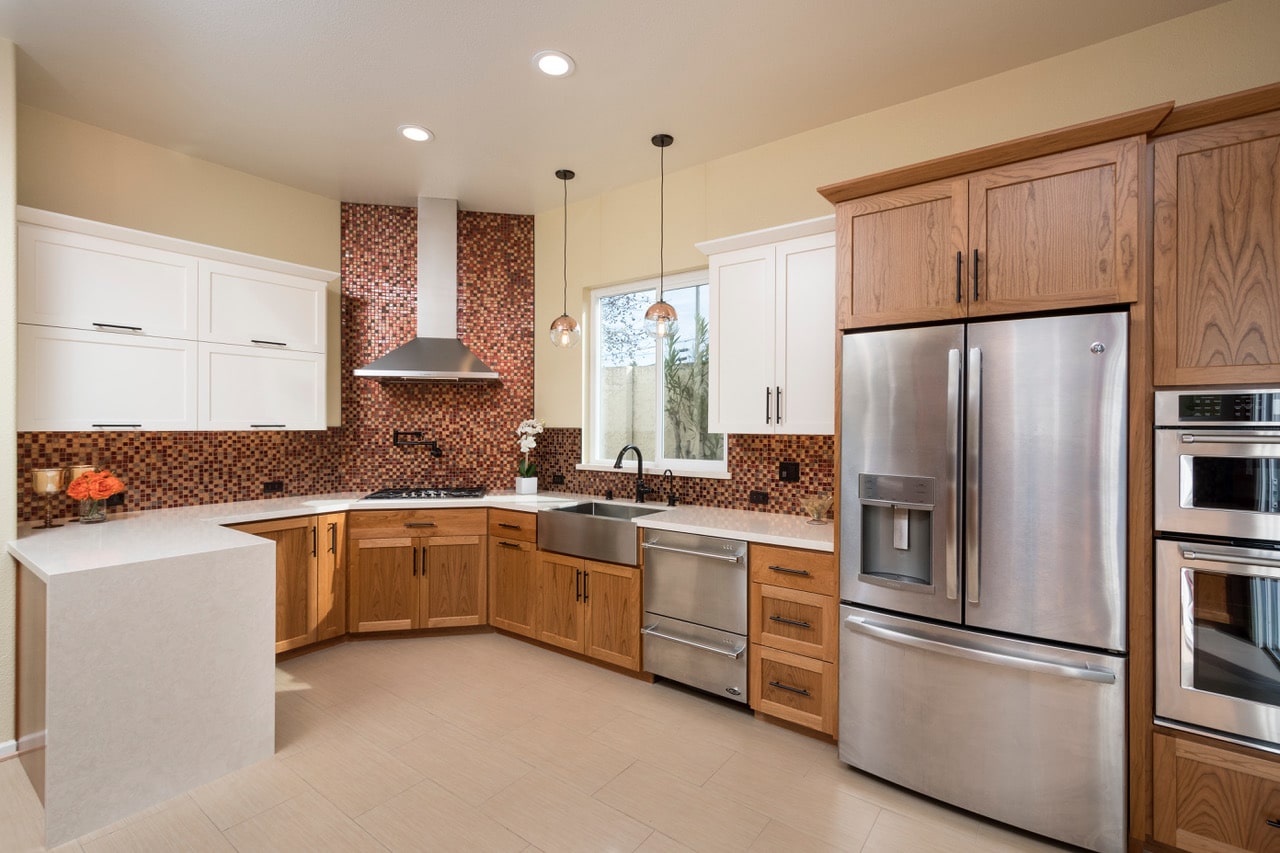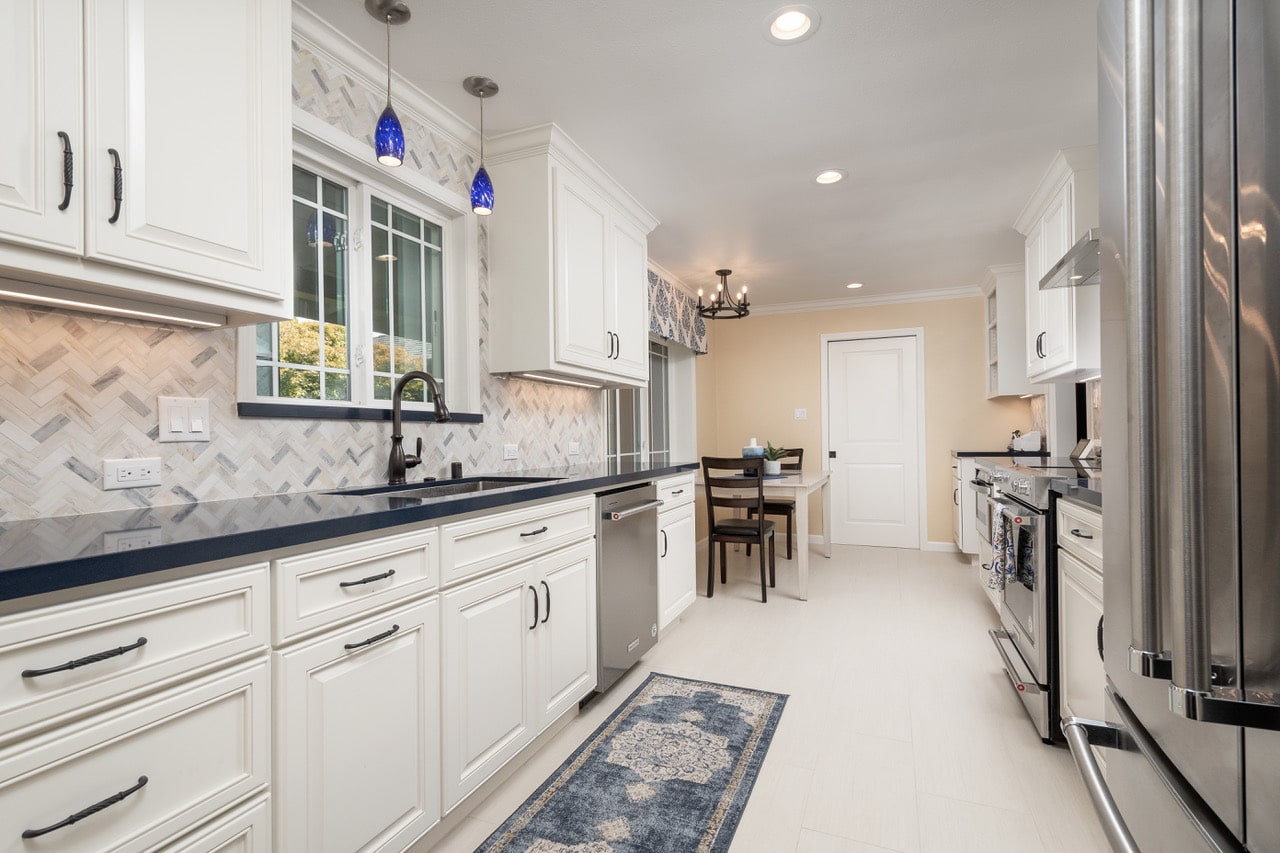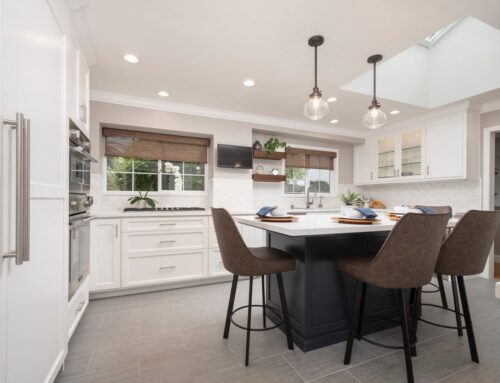If we narrow the choices down to two categories – functionality and aesthetics – this will help you figure out what will work best for your home. In my mind, functionality covers two basic things: will it hold up to your busy lifestyle? and how easy is it to clean and maintain? Aesthetics are also important— you will keep this floor for many years, so let’s make sure you will like it for that long.
Tile
What kind of cook are you? Do you use a lot of oils and spices in your cooking? Are you an avid cook? A messy cook? Do you have kids? Pets? Tile might be an ideal choice if any of these describe you. Porcelain tile is extremely durable, and is easy to clean up with a damp sponge or mop, or even a wet paper towel. It can withstand spills from your pet’s water bowl, and generally resists fading and staining. And you can pick a tile for any design style. There are tiles with bold patterns and colors, and tiles that mimic wood and natural stone. One downside to tile is the grout. Grout can indeed stain or be hard to clean. To minimize problems with grout, choose larger tiles (larger tiles = less grout!), small grout lines whenever possible, and always keep the grout sealed.
Natural stone and those trendy cement tiles are beautiful, but they are porous which means that oils and other liquids (and even some spices) can permeate and stain them. I recommend sticking with porcelain tiles for high-use areas like the kitchen. Tile is also hard on the legs, but this can be remedied by using a mat in front of the sink or the cooktop.
Vinyl Planks
I am using this type of flooring more and more in my design projects. It’s very practical for busy families. It’s nearly indestructible, and has become extremely popular in the last few years. It’s very easy to mop and sweep, will stand up very well to water spills, and can also be used in adjacent laundry rooms, powder rooms, mudrooms. It’s also attractive enough to use throughout the house. The style choices used to be limited, but now you can select styles that look like hardwood, natural stone, and even modern concrete looks. For those of you who had sheet vinyl flooring in previous kitchens and recognized its durability, vinyl planks offer comparable durability in a more updated look.
Sheet Vinyl
Speaking of sheet vinyl, it is still a really cost-effective and durable product to consider. Sheet vinyl that comes in 12-foot wide rolls often requires no seaming, which means no spaces for water to seep underneath, or for crumbs and dirt to get stuck. Sheet vinyl is impervious to water, and is soft underfoot, more forgiving when you inevitably drop a glass or dish. It comes in a variety of patterns and colors. As a category, sheet vinyl has undergone some much needed updates in terms of design style.
Laminates
Laminate flooring has also experienced some much needed updates. Laminates have a much more realistic look nowadays; some of them look so much like real wood it’s amazing. You can even find distressed and “hand-scraped” looks. There are also stone looks, and more modern concrete looks.
Similar to vinyl planks, laminates look great, and offer excellent durability in kitchens, if you make a habit of wiping up any spills right away. When laminate flooring is properly installed, with nice, tight seams, for example, it can tolerate water spills for a short period of time. However, virtually all laminate flooring uses a fiberboard core, which is actually a wood product. As a wood product, this core will soften and swell if it is exposed to water, and if it gets too wet, and stays wet for too long, the core will stay swollen even after it dries out. Also, if the core becomes waterlogged, the top layers can de-laminate and peel away. It’s best to clean laminate flooring with a dry or barely damp mop or broom. Spot clean any sticky or particularly dirty areas with a damp sponge or paper towel.
With reasonable care, any flooring type will serve you well for many years.








